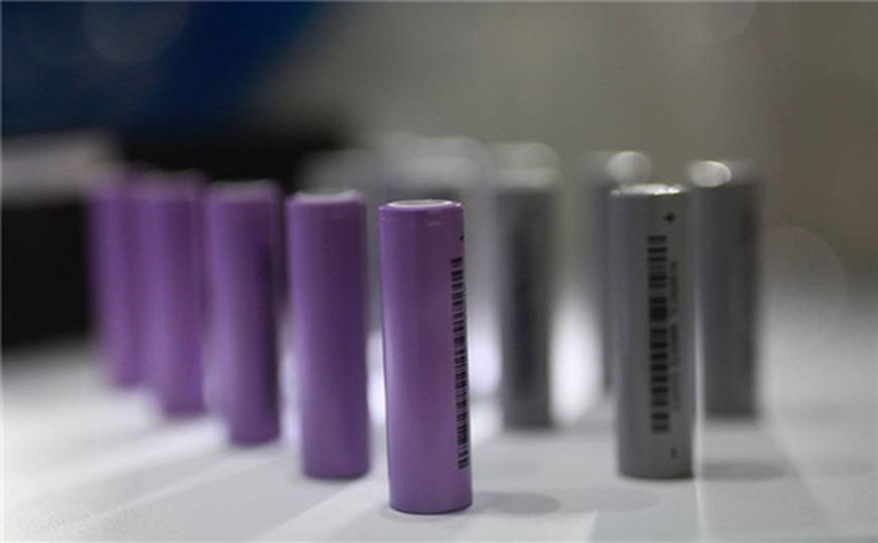How To Use 18650 Battery Charger
Nov 15, 2019 Pageview:1740
The 18650 Cell is a rechargeable lithium-ion battery that is widely used in many electronics like portable lights, torch lights, electric cars and etc. Its application is found in many different fields. One of the main reasons it’s been successful as a battery is because of the versatile properties it carries. Properties like safety, security, longevity, operating temperature, voltage and current carrying ability, charge cycle life, cost and etc. are compared with properties of other popular batteries to overview the differences they have.
What are the characteristics of the 18650 battery charger?
There are several kinds of batteries the lithium-ion battery is compared to. The 18650 cell carries a voltage of 3.7 which is very high compared to other batteries. It has around 1800 to 3500mAh which means it’s rated at 3500 mili-amp-hours which means how long the current-carrying capability will last until the 3500mAh battery is fully consumed. The charge cycle life is different for every battery. It depends on the ampere and voltage of the charger and the type of battery. The average 18650 battery takes about 4 hours to fully charge. The charge cycle also depends on the type of battery charger used. Depending on the battery charger used, it would be easy to identify if protection was needed or if any of the faults were exposed. These 18650 batteries can be recharged 300 to 2000 times which is much better than other batteries as their recharge cycles are short and limited. Mainly because of its great recharge cycle, 18650 batteries are highly recommended. A 18650 battery stores about a maximum of 3.5 Ah. It typically stores up to 13-watt hours in terms of power.
There are also 2 different types of 18650 cell batteries; protected and unprotected. Protected 18650 batteries come with an electronic circuit. This circuit is basically embedded in the casing or packaging of the battery. This gives protection to the cell from factors like heat, overcharge and discharge that can occur over short circuits. Unprotected 18650 batteries need to be monitored while charging. As the name suggests, these batteries are unprotected which means any activity which is being performed by it should be extremely controlled and monitored. These batteries have a higher chance of causing fire and overheating. Although they are cheaper than the protected 18650 batteries, their use is not recommended at all. A protected 18650 battery is considered safe and sufficient for any use and it’s much safer than an unprotected 18650 battery.
How do you use a 18650 battery charger?
Every battery has chemicals in it, which means every battery has some sort of chemistry involved which shouldn’t be ignored while it’s performing any activity. Since the 18650 cell battery comes from the family of lithium-ion chemistry, one should always prioritize extreme precaution and care when using the battery. This means whenever you’re using it as an application, whether you’re charging it or discharging it, you have to ensure certain factors are monitored.
There are several modern 18650 battery chargers nowadays that can just ‘sense’ the type, condition, chemistry of the battery. A 18650 battery charger should be able to tell you the voltage of the battery left so you get how much battery life is actually left. 18650 batteries are rechargeable which means you will need a high performing charger that will support lithium-ion batteries. The number of slots that allow you to charge as many batteries possible at a time should be sufficient. Different battery sizes and chemistries should be supported as well. Discharge, overcharge, overheating, maintenance mode should be notified while charging. Nitecore D4 is an example of a good charger for your 18650 batteries. There are also different built-in USB battery chargers that charge through a connected USB port. The best part about USB chargers is that they monitor and protect the battery condition from external factors. To charge and discharge 18650 batteries safely, you will need a charger that takes the responsibility of tackling safety concerns like overheating, reverse polarity, short circuit and etc. While charging it’s important to make sure the cells have the same voltage level so the batteries can be recharged uniformly. This is known as cell balancing.
Advantages of using 18650 battery chargers
Having a reliable battery charger to charge your 18650 cell batteries is very important. Since these batteries have the capability to last long and recharge more than a thousand times, you will need a charger that won't decrease its charging capacity like other battery chargers. There are many advantages to using a 18650 battery charger. The first one is that it charges the battery very quickly. An average 18650 cell would be recharged in 4 hours. An average 18650 battery charger would take less than 4 hours. Other than this, it would protect the battery while charging. Overheating is a major problem of some battery chargers, but an average 18650 battery chargers come with plastic packaging which protects the batteries from overheating and incidents like short circuits. The charger also automatically stops charging when the battery is fully recharged. This avoids overcharging. Sometimes 18650 batteries need to be monitored to avoid overheating and short circuits from happening, but their battery chargers also notify if the temperature is increasing and if the battery is fully charged. The operations are straightforward and super simple to understand. The chargers are relatively cheaper compared to the batteries but it’s important to look at the specifications before buying them. Make sure to buy a charger that fulfills your current and future battery needs.
- Prev Article: Do lithium batteries leak acid?
- Next Article: How to send Lithium batteries in the post?
Leave Message
Hottest Categories
-
Hottest Industry News
-
Latest Industry News











